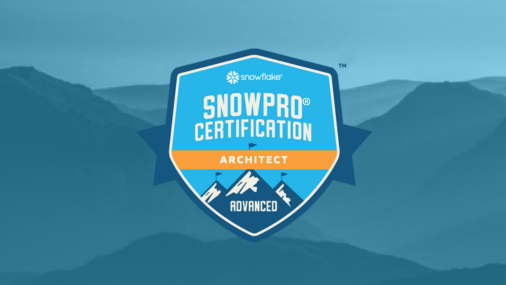SnowPro® Advanced: Architect
The SnowPro® Advanced: Architect Certification will validate advanced knowledge and skills used to apply comprehensive architect solutions using Snowflake.

SNOWPRO ADVANCED: ARCHITECT OVERVIEW
This certification will test the ability to:
- •Design an end-to-end data flow from source to consumption using the Snowflake Platform
- •Design and deploy a data architecture that meets business, security, and compliance requirements
- •Select appropriate Snowflake and third-party tools to optimize architecture performance
- •Design and deploy a shared data set using the Snowflake Marketplace and Data Exchange
SNOWPRO ADVANCED: ARCHITECT CANDIDATE
2 or more years of hands-on experience with Snowflake as an Architect in a production environment.
In addition, successful candidates may have coding experience outside of SQL and DevOps/DataOps design experience.
SnowPro FAQs
Frequently Asked Questions
Learning Tracks
Snowflake Learning Journey
You know what you’re looking for, and we have curated paths to help you achieve whatever your learning goals. From skill building badges, to preparation for the SnowPro core certifications we have you covered.
Snowflake Education Services includes Instructor-Led Training, SnowPro Certifications, and this online, on-demand educational courses website. Our on-demand courses are branded as "Snowflake University." Snowflake University (aka Uni) offers a badge program called Hands-On Essentials as well as other courses.